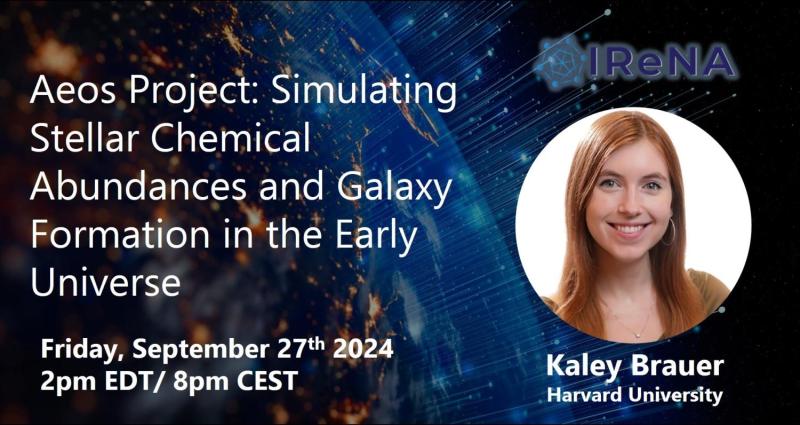Data
Aeos Project: Simulating Stellar Chemical Abundances and Galaxy Formation in the Early Universe featuring Kaley Brauer (Harvard University)

Hosted by: Avrajit Bandyopadhyay
Abstract: The chemical signatures of the earliest stars hold critical clues to nucleosynthetic processes and galaxy formation in the early Universe. The Aeos project presents a series of high-resolution cosmological simulations that model star-by-star chemical enrichment and galaxy formation within the first ~300 Myr. With 1 pc resolution, these simulations offer insights into the spread of stellar chemical abundances observed in dwarf galaxies, the effects of metal mixing in the interstellar medium, and feedback from Population III stars. Our comparisons with lower-resolution simulations demonstrate the importance of modeling individual stars to capture the formation and evolution of the smallest galaxies, with Aeos resolving galaxies as small as 10-100 solar masses. Additionally, we explore how variations in the Population III initial mass function (IMF) significantly influence ionization history and galaxy formation, with higher Pop III characteristic masses leading to fewer small galaxies. Aeos also reveals the interconnected nature of early galaxies, where metal enrichment from more massive galaxies impacts their neighbors. Future work will extend the simulations to the epoch of reionization, offering deeper insights into the processes shaping ultra-faint dwarf galaxies and their stellar populations.
